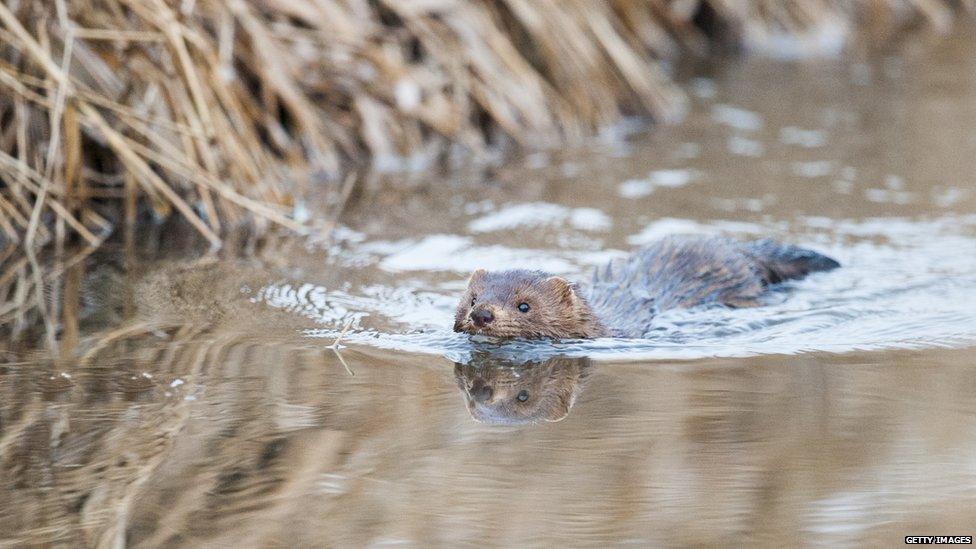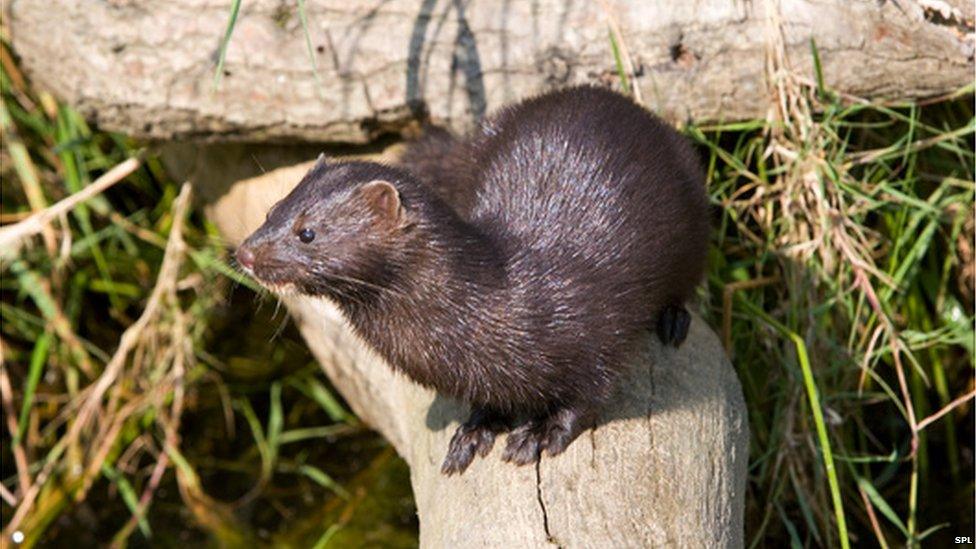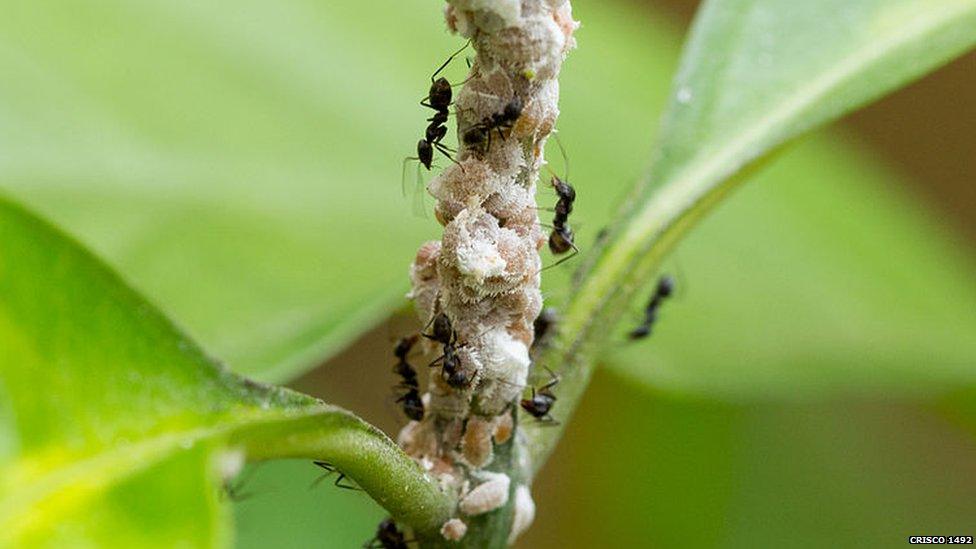Five plants and animals we don't want any more of
- Published

American mink: Cute but bad for birds and voles
From the American mink to the lionfish and the Argentine ant.
They may not be household names but, according to experts, they're top priority for attention over their potential risks to the environment.
Already found in parts of Europe, they can invade ecosystems and squeeze out other wildlife.
Yet, there are currently no restrictions on their release, trade, breeding and transport within the EU.
Species that are already on the EU's list, external of invasive species have to be monitored and tackled.
But there's a big backlog and more species need to be considered urgently, say scientists.
"Since 2014 only 49 species have made it to the list," explained Dr Carles Carboneras of Birdlife Europe and Central Asia. "That is clearly not enough - it does not match the magnitude of the problem that we have."
Danny Heptinstall, also of Birdlife Europe and Central Asia, added: "The public don't recognise the scale of the problem and governments aren't responding well."
Alien invaders
Invasive alien species are plants and animals that have spread outside their natural range because of human actions. They are one of the biggest causes of biodiversity loss and species extinctions.
EU Member States must take measures to detect, remove or manage species on the official list. However, this currently covers less than 5% of more than 1,000 established species with known ecological or economic impacts in Europe.
The new study, published in the Journal of Applied Ecology, external, developed a new approach to prioritising species for risk assessment. Researchers say more than 200 species need to be assessed by 2020 for their potential to permanently damage native species or ecosystems.
"The problem is that developing critical risk assessments takes considerable time and effort, and the number of introduced species already in the EU or that might be introduced in the future is very large," Dr Carboneras added.
"Our study plays a key role in policy implementation by proposing species in a ranked order."
Here are some of the animals and plants that are of high priority, according to the study. Scientists say they need to be assessed by 2018.
American mink (Neovison vison)

The American mink
Found in about 20 European countries
They have escaped from fur farms and set up home in many locations, preying on birds and small mammals
Involved in the near extinction of the water vole in the UK and the loss of important colonies of ground-nesting sea birds on the coast of Scotland.
Port Jackson wattle (Acacia saligna)

Acacia saligna (Port Jackson wattle)
A small tree, with green leaves and bright yellow flowers that is native to Australia
Introduced to Italy in the 1950s
Found in coastal Mediterranean areas, where it competes with indigenous species.
Sea walnut

Mnemiopsis leidyi from the Black Sea
Looks like a jellyfish but is technically a comb jelly
The stingless jellyfish-like animal is native to the east coast of North and South America
It was accidently introduced into the Black Sea and has spread to the Baltic and eastern Mediterranean
Introduction into the Black Sea had catastrophic effects on the ecosystem and fish stocks
The sea walnuts contribute to the collapse of fisheries because they feed on plankton that commercial fish eat.
Lionfish (Pterois volitans)

Lionfish
Venomous coral reef fish from the Indian and western Pacific oceans
Listed as an invasive species in the US and the Caribbean
Can devour colourful reef fish
Found now in Cyprus with the potential to spread further.
Argentine ant (Linepithema humile)

Argentine ant
Regarded as one of the most problematic ant species in the world
Has spread worldwide in areas with Mediterranean-type climates as a result of human activities
Found in several European countries
Capable of eliminating other types of ant colonies and also destroying and eating other insect species and earthworms.
Follow Helen on Twitter, external.